BAG6 negatively regulates the RLR signaling pathway by targeting VISA/MAVS
- PMID: 36045679
- PMCID: PMC9420869
- DOI: 10.3389/fimmu.2022.972184
BAG6 negatively regulates the RLR signaling pathway by targeting VISA/MAVS
Abstract
The virus-induced signaling adaptor protein VISA (also known as MAVS, ISP-1, Cardif) is a critical adaptor protein in the innate immune response to RNA virus infection. Upon viral infection, VISA self-aggregates to form a sizeable prion-like complex and recruits downstream signal components for signal transduction. Here, we discover that BAG6 (BCL2-associated athanogene 6, formerly BAT3 or Scythe) is an essential negative regulator in the RIG-I-like receptor signaling pathway. BAG6 inhibits the aggregation of VISA by promoting the K48-linked ubiquitination and specifically attenuates the recruitment of TRAF2 by VISA to inhibit RLR signaling. The aggregation of VISA and the interaction of VISA and TRAF2 are enhanced in BAG6-deficient cell lines after viral infection, resulting in the enhanced transcription level of downstream antiviral genes. Our research shows that BAG6 is a critical regulating factor in RIG-I/VISA-mediated innate immune response by targeting VISA.
Keywords: BAG6; TRAF2; VISA/MAVS; innate immunity; interferon.
Copyright © 2022 Huang, Li, Xiao and Xu.
Conflict of interest statement
The authors declare that the research was conducted in the absence of any commercial or financial relationships that could be construed as a potential conflict of interest.
Figures

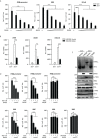
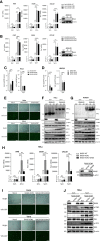
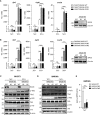
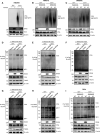
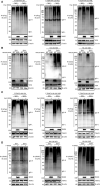
Similar articles
-
Mitochondrial DUT-M potentiates RLR-mediated antiviral signaling by enhancing VISA and TRAF2 association.Mol Immunol. 2021 Apr;132:117-125. doi: 10.1016/j.molimm.2021.01.023. Epub 2021 Feb 11. Mol Immunol. 2021. PMID: 33582548
-
RACK1 attenuates RLR antiviral signaling by targeting VISA-TRAF complexes.Biochem Biophys Res Commun. 2019 Jan 15;508(3):667-674. doi: 10.1016/j.bbrc.2018.11.203. Epub 2018 Dec 5. Biochem Biophys Res Commun. 2019. PMID: 30527812
-
SNX5 inhibits RLR-mediated antiviral signaling by targeting RIG-I-VISA signalosome.Biochem Biophys Res Commun. 2020 Feb 19;522(4):889-896. doi: 10.1016/j.bbrc.2019.11.121. Epub 2019 Dec 2. Biochem Biophys Res Commun. 2020. PMID: 31806368
-
Activation of RIG-I-Mediated Antiviral Signaling Triggers Autophagy Through the MAVS-TRAF6-Beclin-1 Signaling Axis.Front Immunol. 2018 Sep 12;9:2096. doi: 10.3389/fimmu.2018.02096. eCollection 2018. Front Immunol. 2018. PMID: 30258449 Free PMC article. Review.
-
Bag6/Bat3/Scythe: a novel chaperone activity with diverse regulatory functions in protein biogenesis and degradation.Bioessays. 2013 Apr;35(4):377-85. doi: 10.1002/bies.201200159. Epub 2013 Feb 18. Bioessays. 2013. PMID: 23417671 Free PMC article. Review.
Cited by
-
BAG6 inhibits influenza A virus replication by inducing viral polymerase subunit PB2 degradation and perturbing RdRp complex assembly.PLoS Pathog. 2024 Mar 18;20(3):e1012110. doi: 10.1371/journal.ppat.1012110. eCollection 2024 Mar. PLoS Pathog. 2024. PMID: 38498560 Free PMC article.
-
TRAF7 negatively regulates the RLR signaling pathway by facilitating the K48-linked ubiquitination of TBK1.Virol Sin. 2023 Jun;38(3):419-428. doi: 10.1016/j.virs.2023.04.005. Epub 2023 Apr 21. Virol Sin. 2023. PMID: 37086853 Free PMC article.
-
Differential lung gene expression identified Zscan2 and Bag6 as novel tissue repair players in an experimental COPD model.PLoS One. 2024 Aug 22;19(8):e0309166. doi: 10.1371/journal.pone.0309166. eCollection 2024. PLoS One. 2024. PMID: 39172905 Free PMC article.
References
MeSH terms
Substances
LinkOut - more resources
Full Text Sources
Medical
Molecular Biology Databases
Miscellaneous

